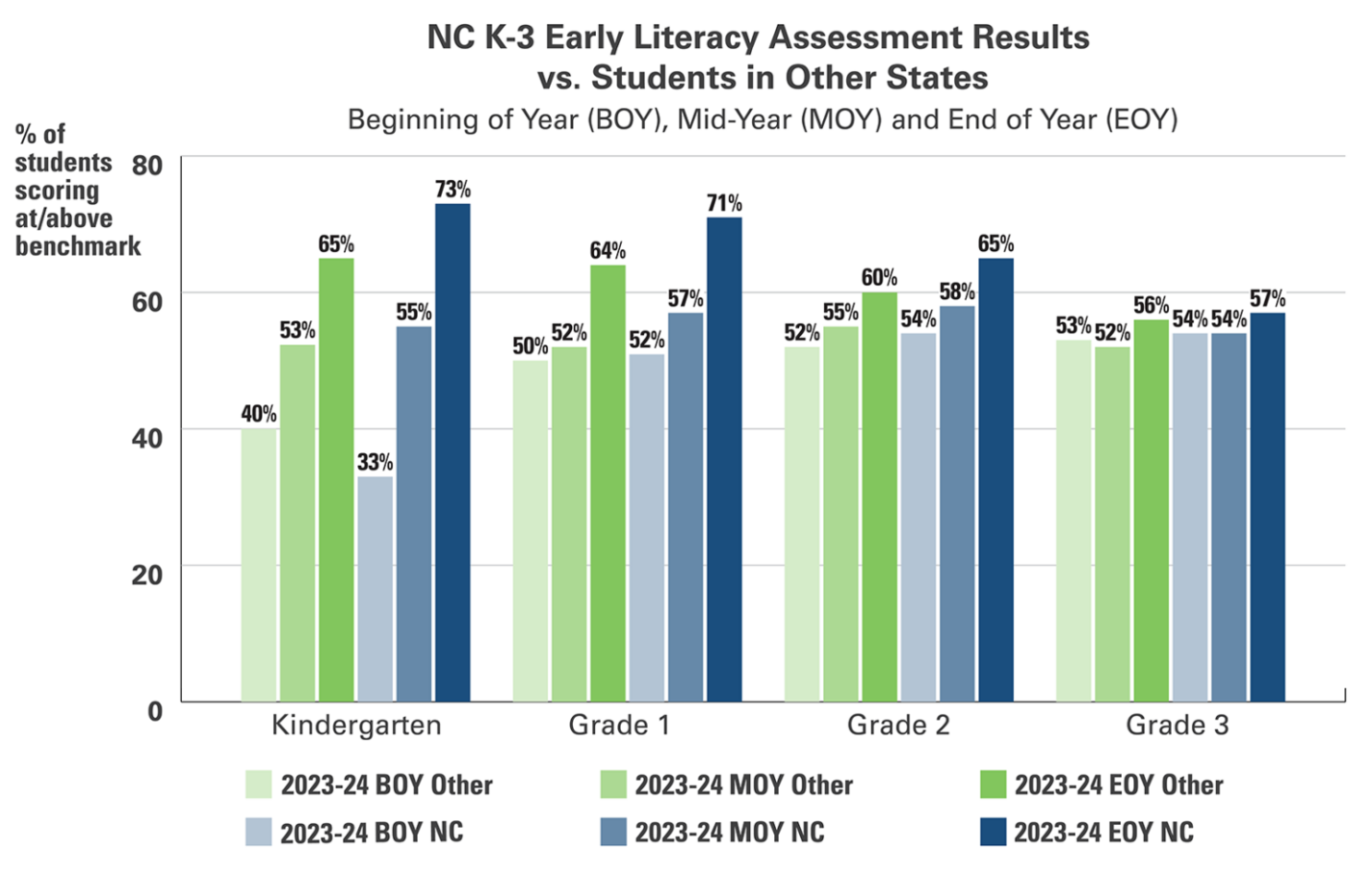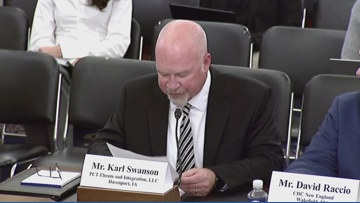North Carolina Students Continue to Excel in Literacy
For the third consecutive year, North Carolina’s kindergarten through third-grade students have outperformed the national average on end-of-year literacy assessments. That’s according to data presented to the State Board of Education on Thursday.
Improvement in Literacy Skills
The number of NC students meeting or exceeding the benchmark for the Dynamic Indicators of Basic Early Literacy Skills—or DIBELS 8—assessment increased by 81,616 from the start of the 2023-24 school year to its conclusion. Additionally, 53,808 fewer students scored well below the benchmark, marking a substantial improvement.
Comparison to National Peers
Across all tested grade levels, a higher percentage of North Carolina students were “on track” compared to their national peers. While K-2 students demonstrated greater improvement from the beginning to the end of the year compared to the national average, third graders showed similar progress to their counterparts across the country.
Notable Gains in Kindergarten
The most notable gains were observed in kindergarten, where the percentage of students “on track” in reading grew by 40% during the 2023-24 school year, compared to an average increase of 25% in other states.

Sustainable Development Goals and Literacy
In a statement, state superintendent of public instruction Catherine Truitt once again attributed the success to implementation of the Language Essentials for Teachers of Reading and Spelling, or LETRS. This two-year professional development program for K-3 teachers, which started in the 2021-22 academic year, equips educators with instructional tools grounded in decades of research into the science of reading. The final cohort completed their training this June.
“They call it the ‘science’ of reading because, like any scientific concept, these methods are grounded in research and data,” said Truitt. “When we implemented LETRS, we knew we’d see results, but to have so many students improve this early in our state’s new literacy journey is a wonderful surprise. It speaks to the dedication of our teachers and the efficacy of the professional development coordinated by NCDPI’s Office of Early Learning.”
Building a Strong Foundation
Amy Rhyne, senior director of NC Department of Public Instruction’s Office of Early Learning, noted that reading skills build upon each previous year’s learning, which accounts for the differences in achievement between grade levels.
“This year’s third graders were already in first grade by the time the original cohort of teachers began LETRS, so it makes sense that they’re not experiencing as much growth as the K-2 students who were exposed to the science of reading earlier,” she said. “Now that all of our students will enter kindergarten with a teacher who has completed LETRS training, they’ll be able to build a really strong foundation. We expect to see that reflected in even greater achievement for our students in years to come.”
SDGs, Targets, and Indicators in the Article
1. Which SDGs are addressed or connected to the issues highlighted in the article?
- SDG 4: Quality Education
The article discusses the performance of North Carolina students on literacy assessments, highlighting improvements in reading skills. This directly relates to SDG 4, which aims to ensure inclusive and equitable quality education and promote lifelong learning opportunities for all.
2. What specific targets under those SDGs can be identified based on the article’s content?
- Target 4.1: By 2030, ensure that all girls and boys complete free, equitable, and quality primary and secondary education leading to relevant and effective learning outcomes.
- Target 4.4: By 2030, substantially increase the number of youth and adults who have relevant skills, including technical and vocational skills, for employment, decent jobs, and entrepreneurship.
The article highlights the improvement in literacy skills among kindergarten through third-grade students in North Carolina. This aligns with Target 4.1, as it demonstrates progress towards ensuring quality primary education and learning outcomes. Additionally, the focus on equipping K-3 teachers with instructional tools grounded in research relates to Target 4.4, which aims to increase the number of educators with relevant skills for effective teaching.
3. Are there any indicators mentioned or implied in the article that can be used to measure progress towards the identified targets?
- Indicator 4.1.1: Proportion of children and young people (a) in grades 2/3; (b) at the end of primary; and (c) at the end of lower secondary achieving at least a minimum proficiency level in (i) reading and (ii) mathematics, by sex.
- Indicator 4.4.1: Proportion of youth and adults with information and communications technology (ICT) skills, by type of skill.
The article mentions the increase in the number of students meeting or exceeding the literacy benchmark, indicating progress towards achieving a minimum proficiency level in reading (Indicator 4.1.1). Additionally, the implementation of the LETRS program equips teachers with instructional tools, which can be considered a relevant skill for effective teaching (Indicator 4.4.1).
Table: SDGs, Targets, and Indicators
| SDGs | Targets | Indicators |
|---|---|---|
| SDG 4: Quality Education | Target 4.1: By 2030, ensure that all girls and boys complete free, equitable, and quality primary and secondary education leading to relevant and effective learning outcomes. | Indicator 4.1.1: Proportion of children and young people (a) in grades 2/3; (b) at the end of primary; and (c) at the end of lower secondary achieving at least a minimum proficiency level in (i) reading and (ii) mathematics, by sex. |
| SDG 4: Quality Education | Target 4.4: By 2030, substantially increase the number of youth and adults who have relevant skills, including technical and vocational skills, for employment, decent jobs, and entrepreneurship. | Indicator 4.4.1: Proportion of youth and adults with information and communications technology (ICT) skills, by type of skill. |
Source: carolinajournal.com







